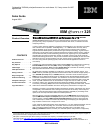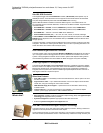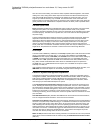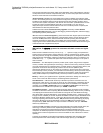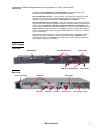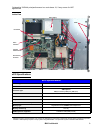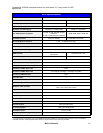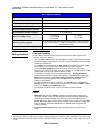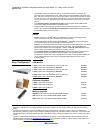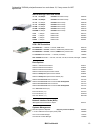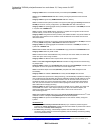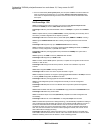
Like C2T Interconnect cabling, ACT reduces clutter, simplifies cable management, and reduces
cabling costs. Also, having fewer cables improves rack airflow and reduces heat buildup. Plus,
while typical KVM cabling limits the management to perhaps 16 servers per switch, ACT can
support up to 256 servers using only one RCM. The reduced switch count means that more
space is freed up in the side-pocket space of customers’ racks; switch and PDU costs should be
greatly reduced; server administration is simplified and there are fewer points of potential failure.
Extensive Systems Management Capabilities
The e325 has a high level of systems management capability, including an integrated systems
management controller, Alert Standard Format, Automatic Server Restart, Wake-on-LAN support,
PXE support, Predictive Failure Analysis, IBM Director and planned support for the optional
Remote Supervisor Adapter II. This allows high levels of manageability for customers, without
their having to purchase additional adapters or options.
The integrated systems management controller provides local and remote monitoring of the
server, including the monitoring of system voltages, temperatures, fans, etc. It also controls the
fan speed and the diagnostic LEDs. It features text console redirection over shared NIC or serial
port, out-of-band LAN-based management, remote out-of-band alerts, support for command-line
interface over shared NIC or serial port, remote access security, out-of-band environmental
monitoring and alerting, secure remote power control and system reset over shared NIC or serial
port, and others.
Alert Standard Format (ASF) firmware alerts IBM Director to anomalous environmental factors,
such as voltage and thermal conditions—even if the server has failed.
Automatic Server Restart (ASR) helps reduce downtime by restarting the server automatically in
the event of a system lockup. ASR technology is a combination of hardware circuitry tied into the
server’s system reset function and a device driver. As long as the server continues running, the
ASR watchdog timer will keep being reset, but if the operating system crashes or the hardware
freezes somehow the ASR software will be unable to reset the hardware timer. If the timer is not
reset within five minutes, it automatically triggers the ASR hardware, which immediately restarts
the server (and logs an ASR event with IBM Director).
These features are designed to prevent
more than five minutes passing before the server is restarted.
Wake on LAN permits the e325 to be remotely powered on if it has been shut off. Once powered
up the server can be controlled across the network, using the Preboot Execution Environment
(PXE 2.0).
Drive Bays
The e325 contains three bays. Two bays are hot-swap-capable (when used with SCSI hard disk
drives). This enables up to two slim-line (1") 3.5” drives to be installed for a total hot-swap
Ultra320 SCSI disk capacity of 293.6GB. (Two fixed IDE drives can be used instead, totaling up
to 240GB.) The bays accept drives that use the Converged Tray, for compatibility with other
xSeries servers. A 24X
7
speed IDE CD-ROM drive is standard in the other (ultraslim half-inch)
bay. (DVD, CD-RW and DVD/CD-RW combo drives are available as options to replace the
CD-ROM drive.) If a 1.44MB diskette drive is required, one is available as an option to attach
externally to a USB port.
If the customer requires more than two 3.5" HDDs, an optional ServeRAID SCSI controller, or an
IBM FAStT Fibre Channel adapter can be installed, along with external storage units.
Variable Speed Fans
Eight strategically located fans provide effective system cooling for the e325, from front to back,
throughout the system. This cooling scheme is important because newer, more powerful
processors generate a significant amount of heat, and heat needs to be controlled for the system
to function properly. The e325 has four system fans, one I/O fan and three fans integrated into
the power supply.
The fans automatically adjust speeds in response to changing thermal requirements. When the
temperature inside the server increases, the fans speed up to maintain the proper ambient
temperature. When the temperature returns to a normal operating level, the fans return to their
default speed. Why not simply run the fans at 100% capacity all the time? For several good
reasons: to reduce the ambient noise, reduce the wear-and-tear on the fans and reduce the
server power draw. The reduction in ambient noise and power draw may be relatively minor for a
single server, but put dozens or hundreds in a data center and it makes a big difference!
Outstanding 32/64-bit price/performance in a rack-dense 1U, 2-way server for HPC
applications
IBM Confidential 5.
7
Variable read rate. Actual playback speed varies and is often less than the maximum possible.



